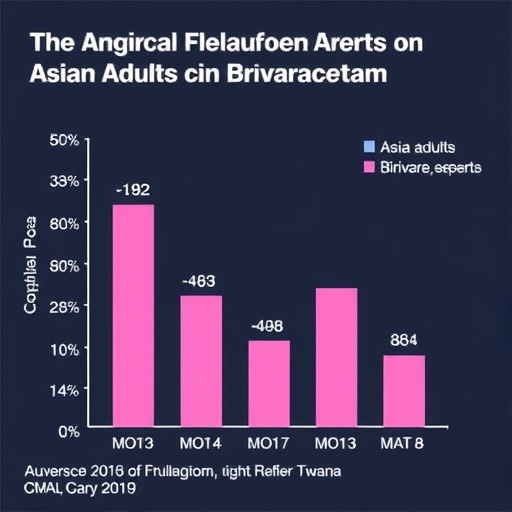ASCO Perspective
"As oncologists, we are constantly striving for better care and outcomes for our patients, even in cancers where survival rates are relatively high compared with others. We now know it's possible to significantly boost survival in children and young adults with rare forms of leukemia and lymphoma, without introducing additional harsh side effects that can impair their quality of life," said ASCO President Bruce E. Johnson, MD, FASCO.
ALEXANDRIA, Va. – In a federally funded, randomized phase III clinical trial performed by the Children's Oncology Group (COG), 90% of children and young adults with T-cell acute lymphoblastic leukemia (T-ALL) or T-cell lymphoblastic lymphoma (T-LL) were alive four years after starting treatment regimens on this trial, and 84% were cancer free. These are the highest survival rates for these T-cell malignancies reported to date, according to the authors.
The addition of nelarabine (Arranon) to standard chemotherapy provided further benefit for the group of patients with moderate or high risk of T-ALL recurrence — at four years 89% of those who received nelarabine were leukemia-free vs. 83% of those who did not. The study will be presented at the upcoming 2018 ASCO Annual Meeting in Chicago.
"T-cell ALL is a disease that requires the use of a very intense and complex chemotherapy regimen. Historically, about 80% of people live at least four years after being treated for their disease, but we felt we could and must do better," said lead study author Kimberly Dunsmore, MD, professor, Virginia Tech Carilion School of Medicine in Roanoke. "Our trial shows that we could further increase survival rates by about 10%, which is very encouraging."
About the Study
The trial, begun in 2007, enrolled patients 1-30 years of age with either T-ALL (94% of trial participants) or T-LL (6% of participants). With 1,895 patients, this is the largest randomized clinical trial ever performed in these diseases.
The trial had four arms, with all patients receiving the standard, complex, multi-drug chemotherapy regimen known as COG augmented Berlin-Frankfurt-Munster (aBFM) chemotherapy. 1 In addition to receiving aBFM, patients were randomly assigned to also receive either high-dose methotrexate (a chemotherapy) in a hospital or escalating dose methotrexate (a regimen that starts with low doses of methotrexate, gradually increased over time) in an outpatient setting.
The group of patients with moderate or high risk of cancer recurrence were also randomly assigned to receive or not receive nelarabine, in addition to chemotherapy, and cranial radiation (to prevent or treat brain metastases).
Nelarabine was approved in 2005 by the FDA for the treatment of people with T-ALL and T-LL that had progressed after at least two chemotherapy regimens. Unlike the trials that led to the FDA approval, nelarabine was tested in newly diagnosed patients in this trial.
Key Findings
- -Overall, 90.2% of patients treated in this trial lived at least four years, and 84.3% had no sign of cancer at four years.
-In the group of patients with T-ALL who had increased risk of recurrence, 88.9% of those who received nelarabine were leukemia-free at four years compared to 83.3% of those not treated with nelarabine.
-While patients with T-LL did not benefit from the addition of nelarabine, more than 85% lived for four years without signs of disease.
-Contrary to results from previous, smaller trials, patients with T-ALL who received escalating doses of methotrexate did better than those who received high-dose methotrexate (four-year disease-free survival with escalating dose was 89.8% vs. 78% with high-dose).
-Among T-ALL patients randomly assigned to receive both nelarabine and escalating doses of methotrexate, 92.2% were leukemia-free at four years.
-Patients who did not have cancer remission following the initial (induction) phase of chemotherapy were assigned to receive high-dose methotrexate and nelarabine; 54.8% of survived four years without signs of the disease. This is a significant improvement, as historically only about 20% of people with T-ALL who did not experience cancer remission lived another three years, according to the authors.
Next Steps
Most doctors are moving to decreasing the use of cranial radiation for T-cell leukemia as late side effects can occur after cranial radiation. Late side effects include changes in cognitive abilities, learning disabilities, neuroendocrine changes, and development of secondary malignancy. The next step will be for clinicians to examine the implications and benefits that may accrue when using nelarabine in chemotherapy protocols without cranial radiation.
###
This study received funding from the Cancer Therapy Evaluation Program within the National Cancer Institute/National Institutes of Health and received support from the St. Baldrick's Foundation.
ATTRIBUTION TO THE AMERICAN SOCIETY OF CLINICAL ONCOLOGY ANNUAL MEETING IS REQUESTED IN ALL COVERAGE.
1Nachman JB, Sather HN, Sensel MG, et al. Augmented post-induction therapy for children with high-risk acute lymphoblastic leukemia and a slow response to initial therapy. N Engl J Med. 1998 Jun 4; 338(23):1663-71.
About ASCO:
Founded in 1964, the American Society of Clinical Oncology, Inc. (ASCO®) is committed to making a world of difference in cancer care. As the world's leading organization of its kind, ASCO represents nearly 45,000 oncology professionals who care for people living with cancer. Through research, education, and promotion of the highest-quality patient care, ASCO works to conquer cancer and create a world where cancer is prevented or cured, and every survivor is healthy. ASCO is supported by its affiliate organization, the Conquer Cancer Foundation. Learn more at http://www.ASCO.org, explore patient education resources at http://www.Cancer.Net, and follow us on Facebook, Twitter, LinkedIn, and YouTube.
Media Contact
Kelly Baldwin
[email protected]
571-483-1365
http://www.asco.org
https://www.asco.org/about-asco/press-center/news-releases/new-regimens-improve-survival-children-and-young-adults-t-cell




